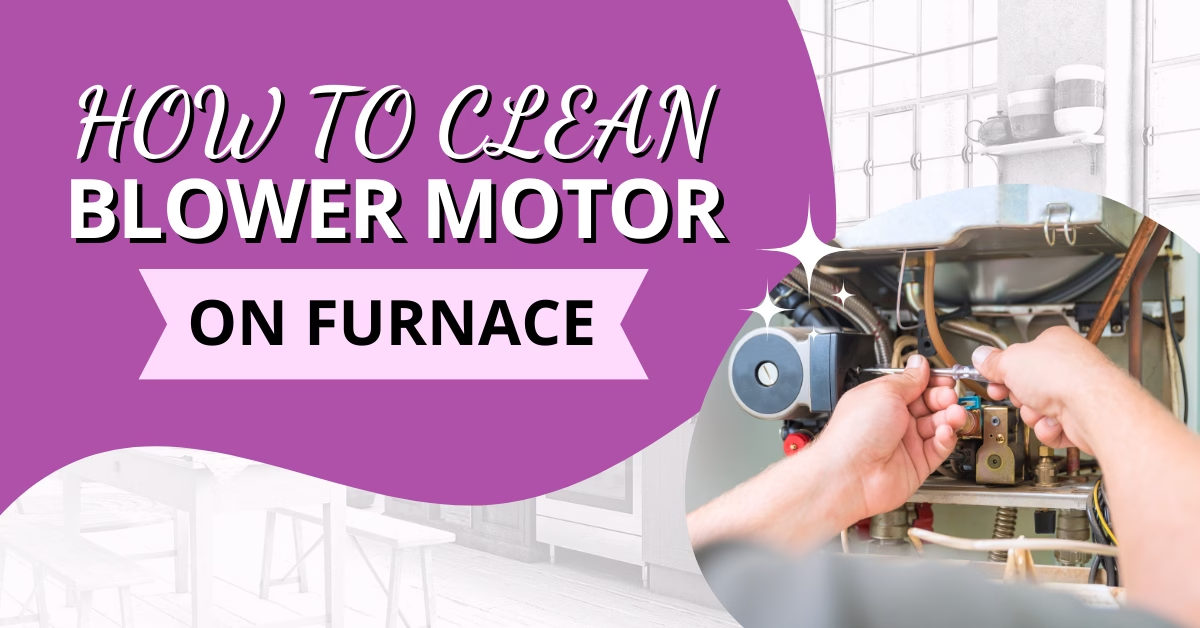Dirt and dust buildup inside your furnace blower motor can cause all sorts of trouble. You may notice dusty surfaces, worsening allergy symptoms, and higher energy bills as your furnace struggles to push clean, warm air throughout your home. By keeping the blower motor clean, you’ll improve your furnace’s efficiency, enhance indoor air quality, and extend the service life of your system.
While some homeowners may consider taking on this task, some heating maintenance is best left to the pros. Keep reading to discover the benefits of professional blower motor cleanings and the steps involved in keeping your system running smoothly.
Why Cleaning Your Furnace Blower Is Important
A clean blower motor is key to a properly functioning furnace. If layers of dust and grime block its path, the blower fan has to work harder to push air through your ductwork, resulting in higher energy bills and faster wear and tear.
With dirt and dust blowing around, your indoor air quality begins to diminish. Instead of clean, fresh air, your furnace spreads contaminants throughout your home. If you notice more dust on your furniture or your allergies acting up, a dirty blower may be the culprit.
Regularly cleaning the blower motor helps improve your furnace’s efficiency, lower energy usage, enhance home comfort, and prevent potentially harmful contaminants from circulating in your air.
Signs Your Blower Motor Needs Cleaning
When your blower motor is overdue for a cleaning, you’ll start to notice warning signs that it’s time for professional maintenance, including:
- Rising energy bills: A dirty blower motor has to work harder, using more energy to keep your home at the set temperature.
- Strange noises: Rattling, humming, or grinding noises from your furnace often indicate dirt buildup affecting its performance.
- Poor airflow: A clog or blockage may prevent the motor from circulating air properly, resulting in less airflow from your vents.
- Excess dust: If you find yourself dusting more often than usual, a dirty blower motor may be circulating debris.
- Frequent cycling: If debris buildup is restricting airflow, your furnace may begin to overheat, shut down more frequently, or not turn on at all.
How To Clean the Blower Motor on a Furnace
If your furnace is due for cleaning, call a reputable HVAC company near you. They have the tools and experience to thoroughly clean your HVAC blower while keeping your family safe. Cleaning the blower motor involved the following steps:
- Step one: Shut off the furnace to prevent electrical risks.
- Step two: Carefully remove the access door, switch, and blower assembly.
- Step three: Use compressed air, a soft brush, or a specialized vacuum to clean the blades and housing.
- Step four: Inspect the blower motor and lubricate if necessary.
- Step five: Check for wear and tear, worn belts, or other issues.
- Step six: Reinstall the blower and test that everything runs smoothly.
Why Leave Furnace Blower Motor Maintenance to the Pros?
While cleaning may seem like a simple task, it’s best to leave furnace maintenance to the professionals. With delicate components, electrical connections, and the risk of harmful gas or carbon monoxide leaks, improper handling can lead to system damage and serious safety hazards.
By leaving blower motor maintenance to the pros, you’ll:
- Reduce safety risks: Professionals have the training to safely handle your furnace and prevent gas leaks, short circuits, and other hazards.
- Ensure proper cleaning: With specialized tools, technicians can clean every inch of the blower motor without damaging sensitive parts.
- Prevent costly repairs: Improper maintenance can cause overheating and motor failure, leading to major heating repairs.
- Extend your system lifespan: Professional tune-ups improve efficiency and prevent strain on your furnace, helping it reach its maximum service life.
- Catch potential issues: HVAC pros inspect the blower motor to identify minor problems before they progress into major repairs.
Call Frank’s for Blower Motor Maintenance in Amarillo!
Whether your furnace is overdue for a cleaning or you want to schedule a routine tune-up, the team at Frank’s is here to help with professional furnace maintenance. Our experienced HVAC technicians will clean, inspect, and tune up your entire furnace to keep it running smoothly all winter long. With routine tune-ups from our experts, you’ll see a longer system lifespan, fewer repairs, and improved indoor air quality.
Contact us today to schedule your furnace maintenance appointment in Amarillo or the surrounding areas. Remember to ask about our Diamond Club Membership, which includes bi-annual HVAC tune-ups, priority scheduling, and other VIP perks.
Frequently Asked Questions
How often should my furnace blower be cleaned?
Schedule a professional furnace blower cleaning at least once per year, ideally in late summer or early fall. Annual tune-ups help prepare your furnace for the upcoming heating season, catching and repairing any issues before temperatures drop.
What other tasks will you perform during a furnace tune-up?
Our technicians thoroughly clean, inspect, and tune up every inch of your furnace. We’ll change the air filter, check the thermostat calibration, tighten loose connections, test for carbon monoxide leaks, and more. Contact us to learn more and schedule your tune-up today!
What does the furnace blower motor do?
The furnace blower motor moves air throughout your system. It pulls in cool air, pushes it through the furnace, where it’s heated, and sends it through your ductwork and vents to warm your home. Keeping it clean and functioning helps your furnace run efficiently, improves indoor air quality, and maintains a comfortable temperature throughout your home.
What are the signs my blower motor needs replacement?
If you notice little or no airflow coming from the vents, strange noises, smoke or burning smell, or excessive vibration, your furnace blower motor may require replacement. Contact our team to schedule an inspection, and we’ll determine whether repair or replacement is best.


